A sneak peek into Indian Navy's 40,000 tonne Indigenous Aircraft Carrier-1 - See pics
This Rs 20,000 crore vessel features 76% indigenous components.
Aircraft carriers or floating military airfields are considered the pinnacle of Naval engineering, operations and the most potent form of power projection, far from a country’s shores. India has operated aircraft carriers for nearly five decades, but all of those carriers have been of a foreign origin and were later modified for the Indian Navy.
Coinciding with India’s 75th year of Independence, in 2022, a made-in-India, made-for-India engineering marvel, known as the Indigenous Aircraft Carrier (IAC-1) will be inducted into the Indian Navy.
IAC-1 weighs nearly 8 times more than a normal warship
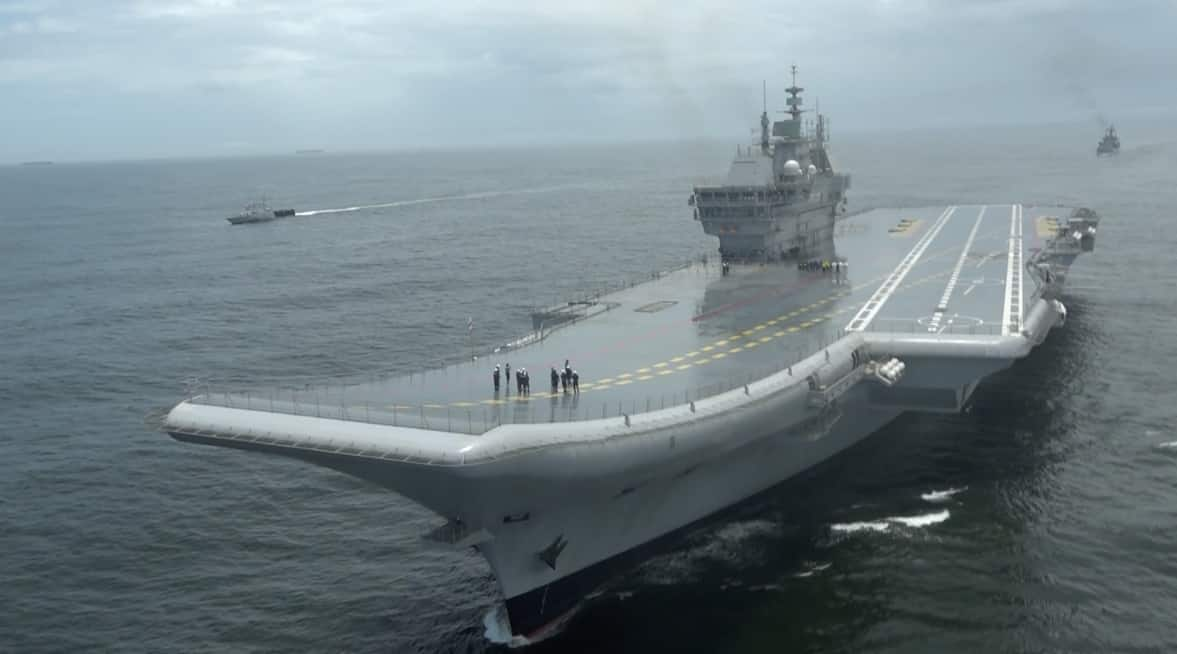
With a displacement of over 40,000 tonnes, the IAC-1 dwarfs all other warships that the Indian Navy operates and weighs nearly 8 times more than a normal warship.
Designed by the Navy’s Directorate of Naval Design(DND) and built by India’s state-run Cochin Shipyard Limited, the Indigenous Aircraft carrier is the country’s most prestigious military project to date.
(Photo: Zee Media's Sidharth MP)
Zee Media boarded a Sea King chopper to view gigantic IAC-1
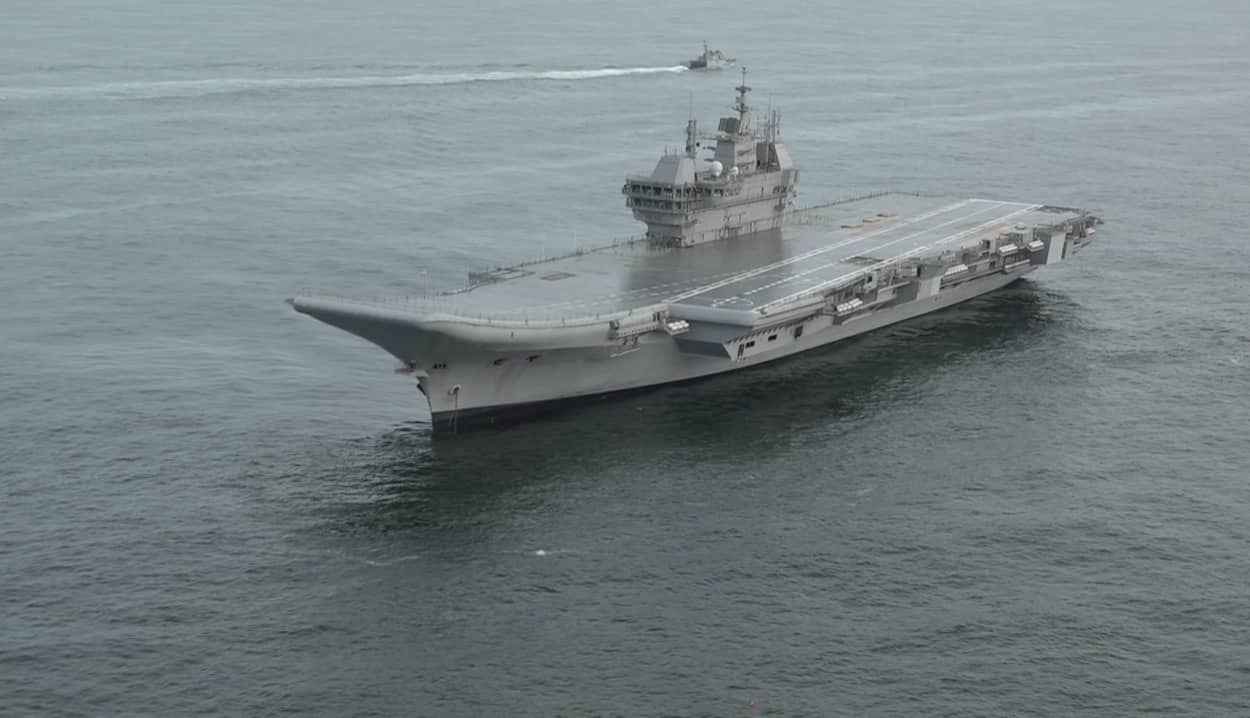
Courtesy of the Indian Navy, Zee Media boarded a Sea King chopper from India’s Southern Naval Command Headquarters and headed for the high seas, flying over Kochi city.
While large ships and fishing boats dotted the coast for a considerable part, thereafter, it was a vast expanse of blue. Amid this endless horizon, there emerged a gigantic and distinct mass of grey metal, majestically cruising through, with several smaller Navy vessels flanking it.
(Photo: Zee Media's Sidharth MP)
On its frontal region, IAC-1 features two take-off axes
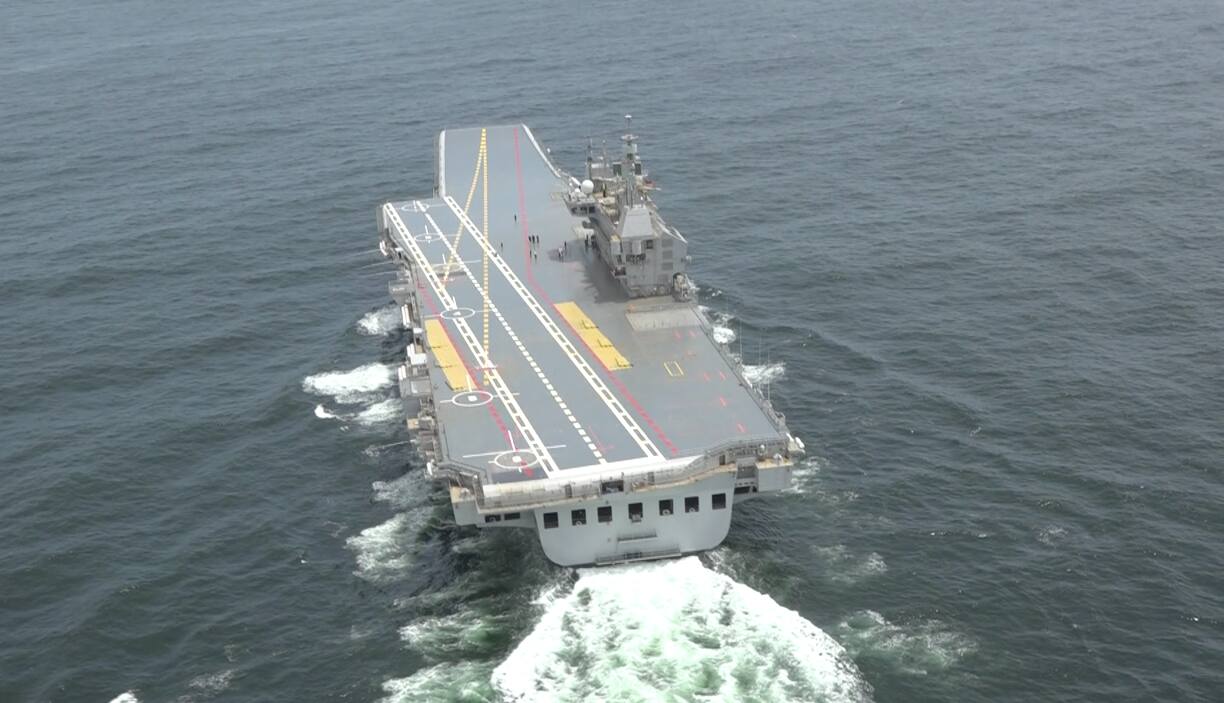
The carrier is 262 meters long, 62 meters wide and nearly 18 storeys tall.
On its frontal region, IAC-1 features two take-off axes (150 meters and 200 meters long) meant for fighter jets. The aft (rear portion) of the carrier has a landing strip for fighter aircraft.
Besides these, the deck also has multiple areas marked for the landing of choppers.
(Photo: Zee Media's Sidharth MP)
Indian Navy's IAC-1 as seen from the Helicopter

A typical airport runway is anywhere between 2-3 kms, so how does a floating airport with barely 200 meters of runway enable fighter jet take-off?
Aircraft wheels are held back by restraining blocks, during which the pilots rev the engines to full power. At the opportune moment, the restraining blocks that hold back the aircraft from taking-off are released.
The 20-ton fighter aircraft zooms past the 200-meter runway in a matter of seconds and soars into the sky after leaping off the Ski-jump that can be seen at the front end of the carrier.
(Photo: Zee Media's Sidharth MP)
Sea trials of indigenous aircraft carrier are going extremely well

Indian Navy Chief Admiral Karambir Singh and Shipping Minister Sarbananda Sonowal, senior officials visited the carrier as it underwent its second phase of sea trials off Kochi.
The Minister lauded Cochin Shipyard limited and Indian private industry for their contribution in realizing such a magnificent ship.
The Navy Chief said that the sea trials were going extremely well and that the Navy hoped to Commission the carrier by August 2022
(Photo: Zee Media's Sidharth MP)
IAC-1 can carry 1,700 crew
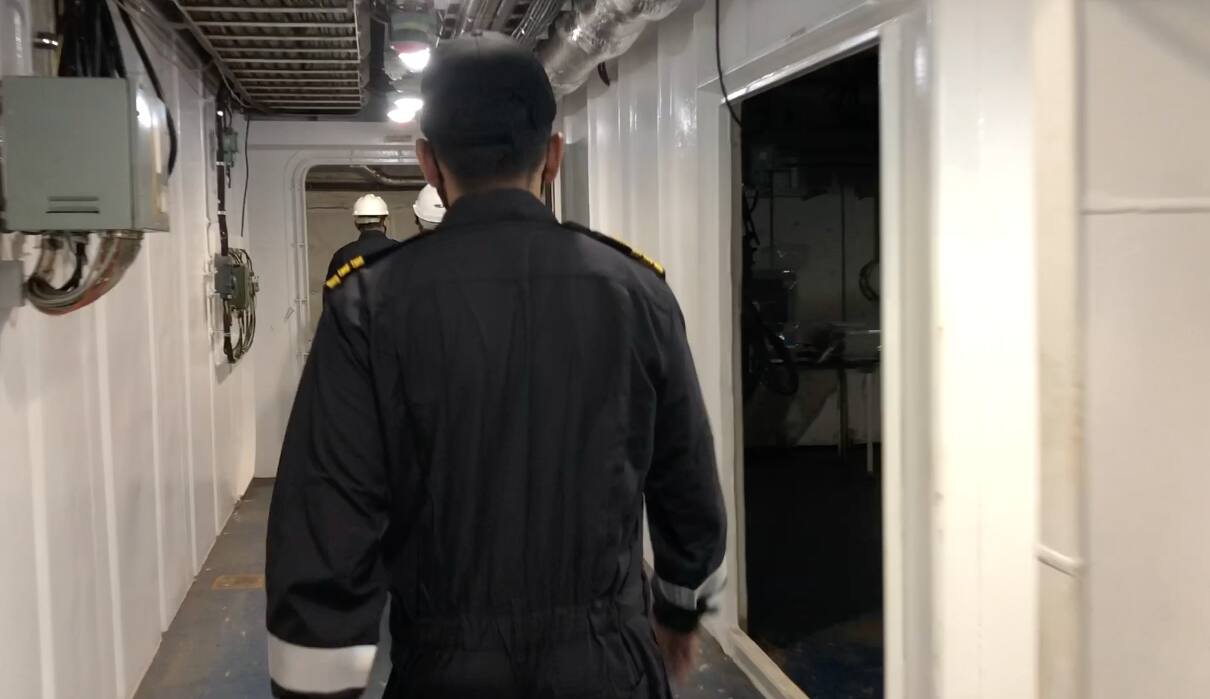
Inside IAC-1
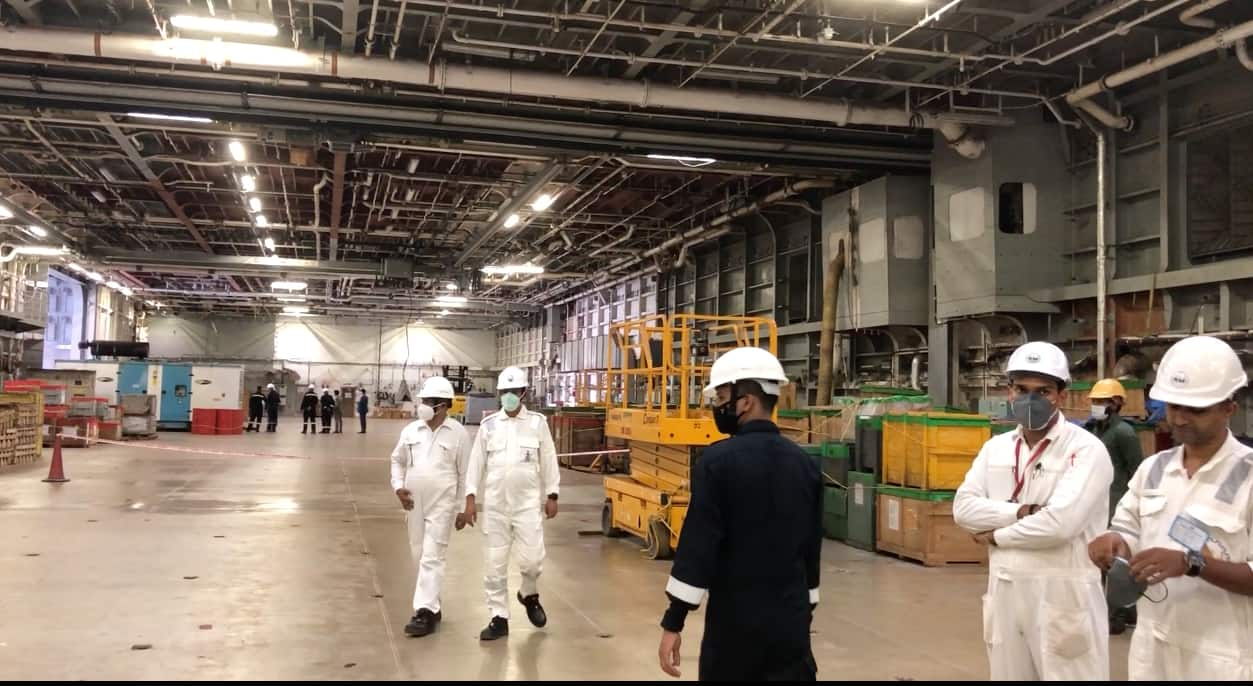
Missiles, bombs and armaments protect the aircraft from its enemies. But, while on board, the aircraft hangar protects the aircraft and choppers from the harsh elements and inclement weather.
Operating a floating airbase at sea requires immense resources to store, service, maintain, aircraft and ensure high availability. The aircraft hangar that spans the entire length of the ship, is where the flights are stored during harsh weather and during times of their service and maintenance.
(Photo: Zee Media's Sidharth MP)
The Flyco
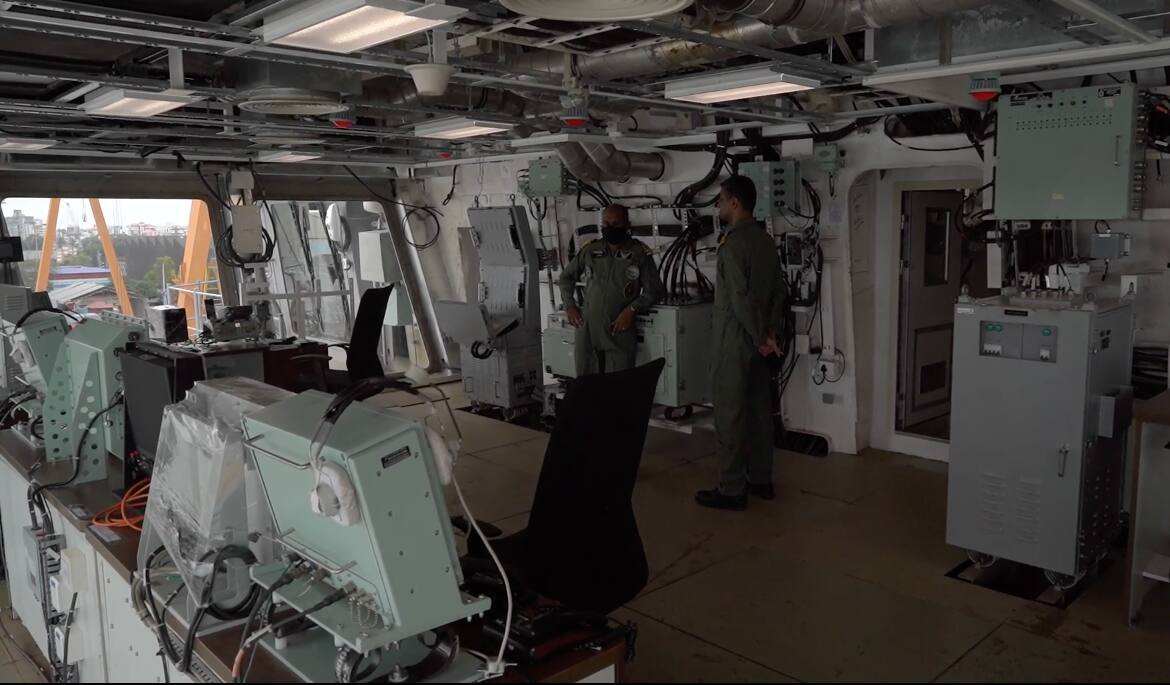
If you have a floating airfield, you better have a floating Air Traffic Controller - the Flight Command AKA FlyCo. The Flight Command plans, controls, and facilitates the take-off, landing, operations, arming, de-arming, positioning etc of all aircraft onboard the Carrier.
The Flyco is also responsible for the flight operations of all choppers on board the accompanying ships (part of the carrier battle group). Flyco also has the best and most panoramic view of the ship’s Flight deck.
(Photo: Zee Media's Sidharth MP)
IAC-1's control centre
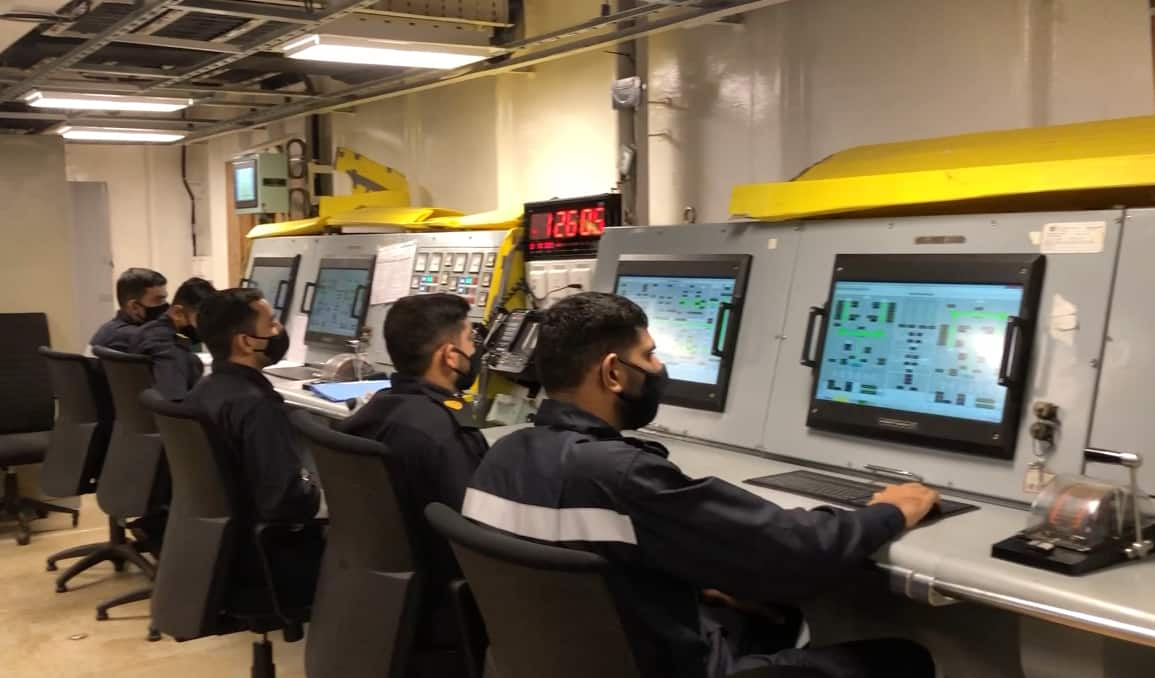
IAC-1 from inside

Sneak peek into IAC-1
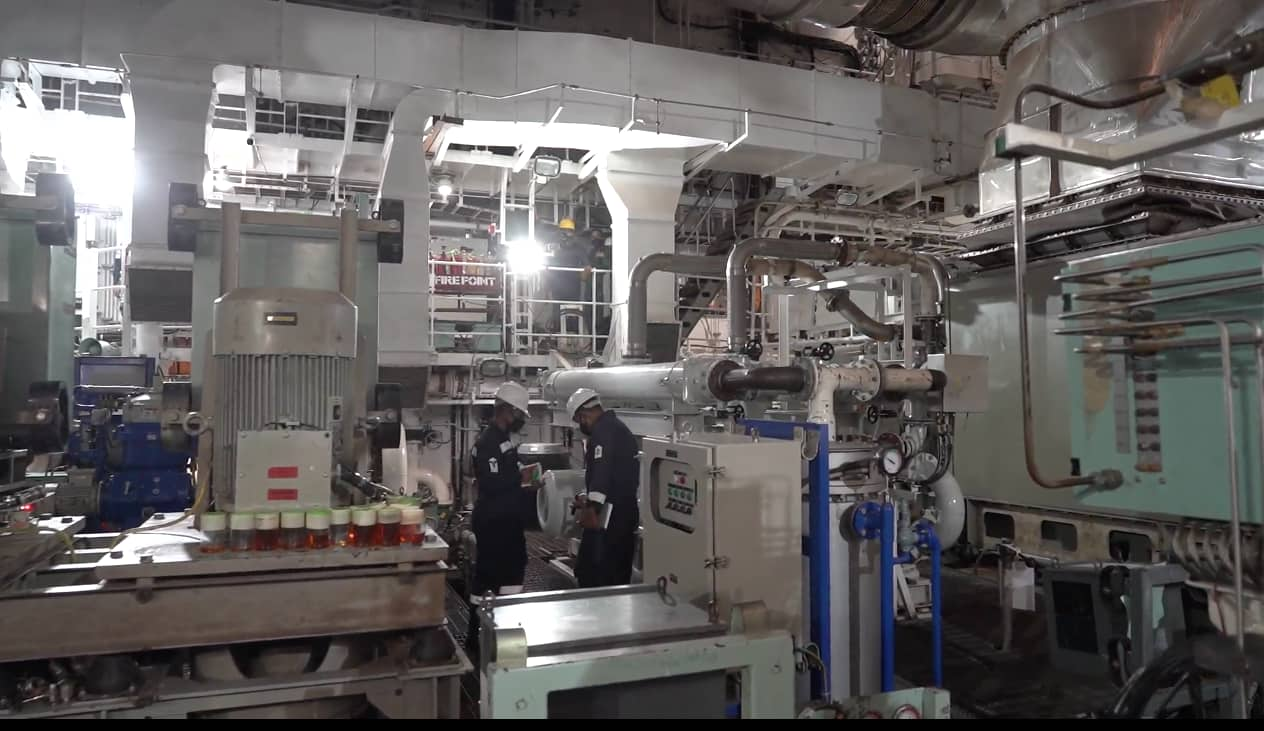
IAC-1's engine room
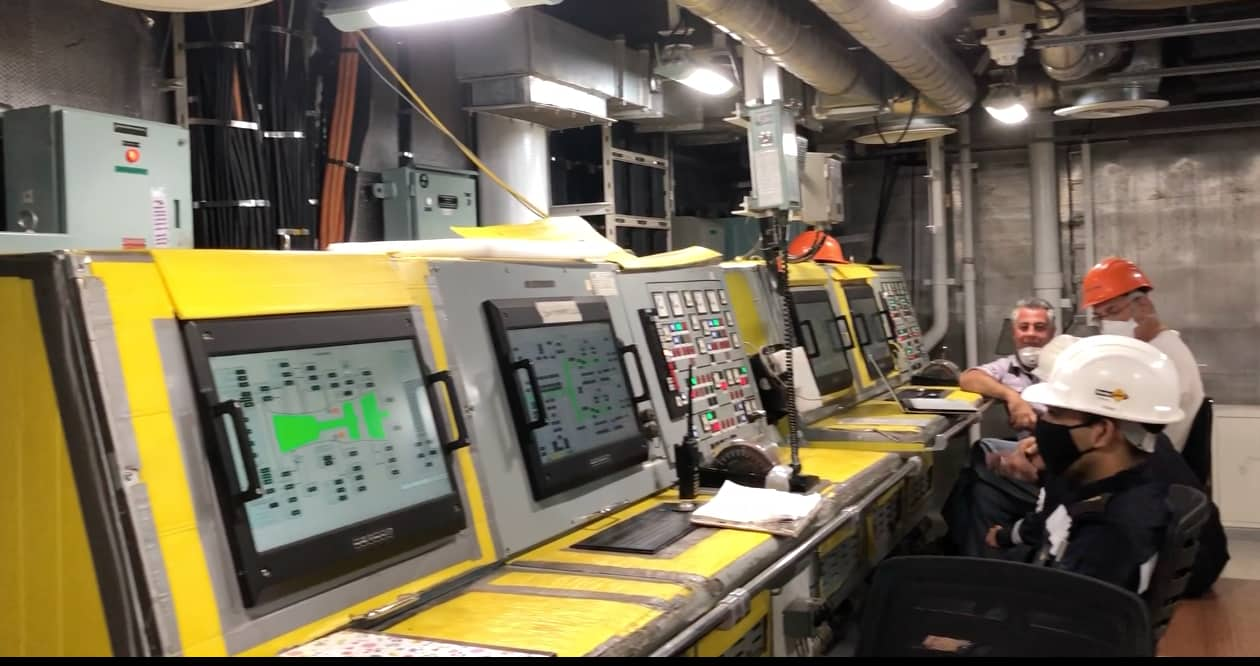
IAC-1 has4x LM-2500 Gas turbines

This gigantic carrier is propelled by 4x LM-2500 Gas turbines that produce 90MW of power.
IAC-1 uses license-built Indian versions of the LM-2550.
Originally developed by General Electric, USA, the gas turbines used on IAC are are built by Hindustan Aeronautics Limited, India.
(Photo: Zee Media's Sidharth MP)







